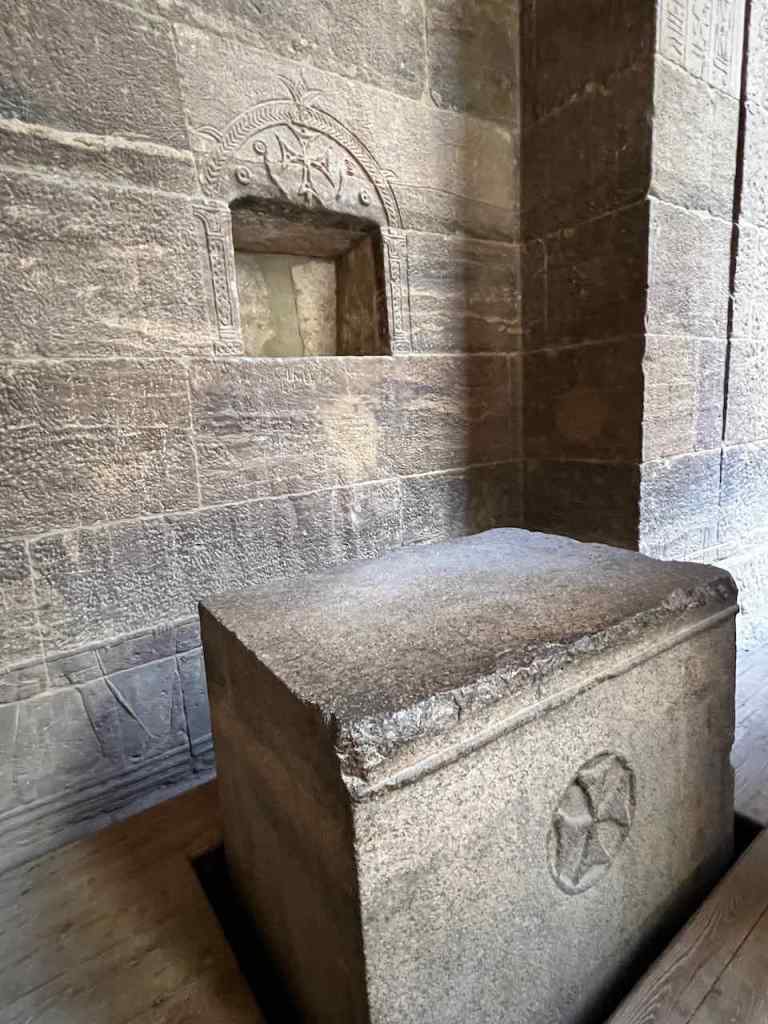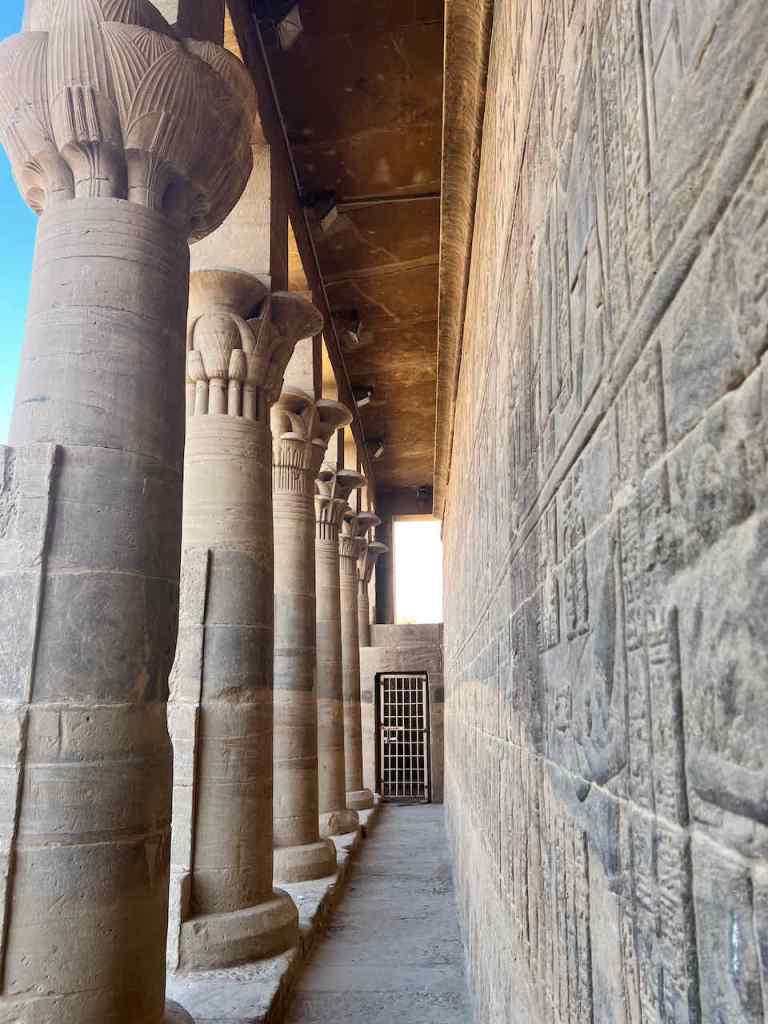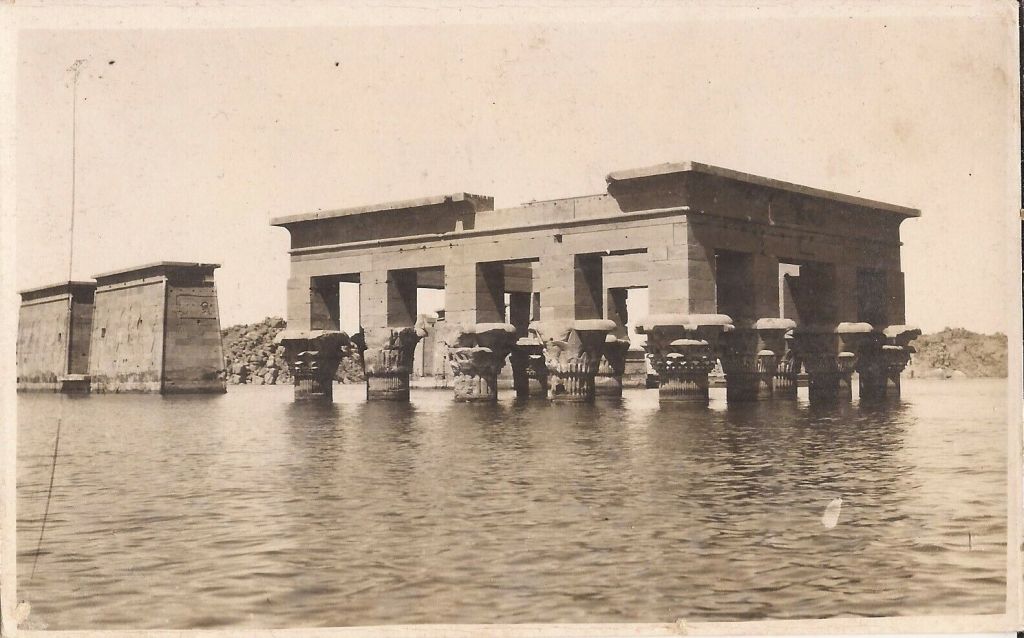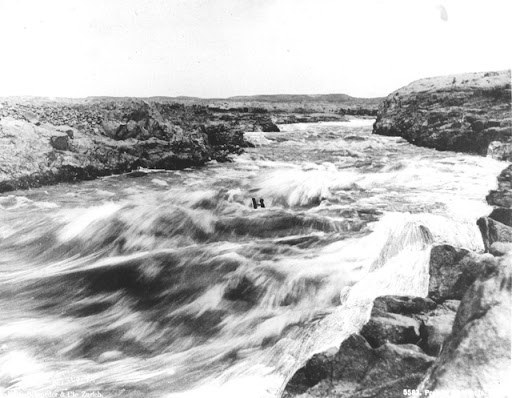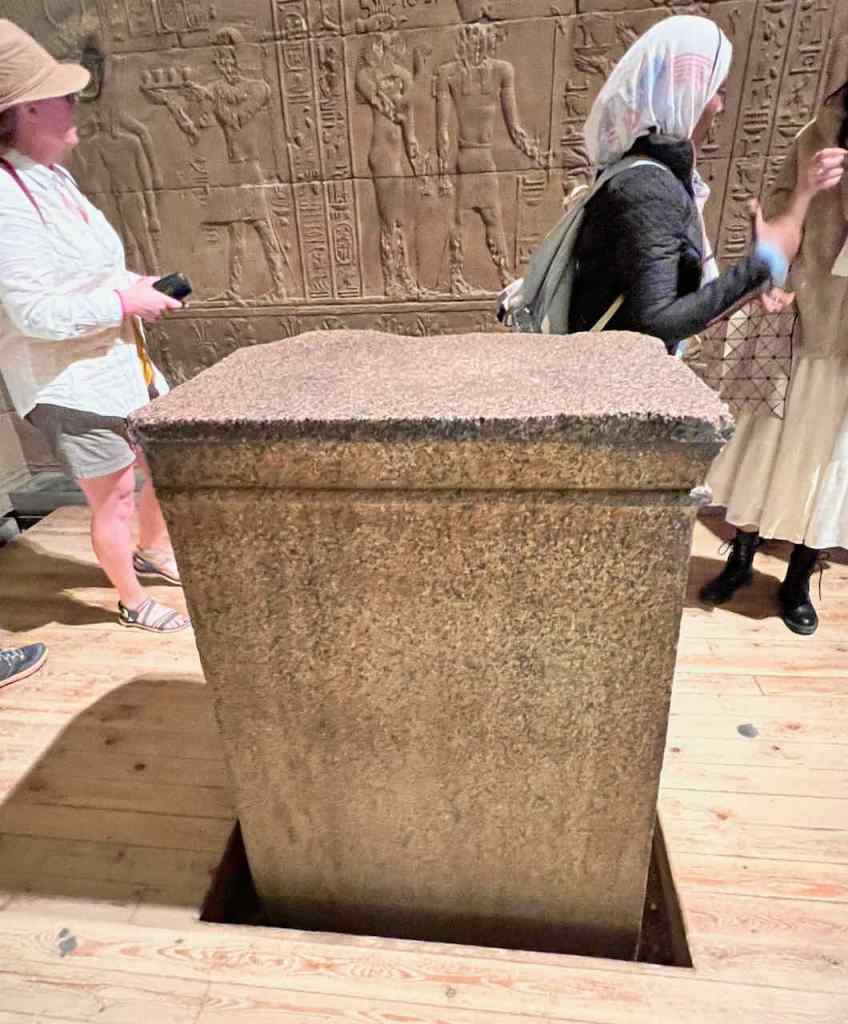For me, of course, a highlight of our recent Egyptian pilgrimage was the visit to Her temple at New Philae, or Agilika (or Agilkia), island.
So I thought I’d share some photos with you so you can see what it looks like from more angles than you might usually get to see. There are more exterior shots than interior because the interior of the temple was freaking FULL of tourists. (Tourist tip: if you go, go as early or late as you can. We neglected to do this.)
But first, do you know the story of how they moved this temple, considered the most beautiful of all Egypt’s surviving temples? If not, I’ll tell it briefly…
With the building of the second Aswan dam in 1971, the Temple of Isis on the original Philae island was flooded.
Happily, it does not look like this today thanks to an enormous international effort that moved the entire temple—block by block—to a new and higher island, which was landscaped to look like the original.
Ancient Philae was situated at the Nile’s first cataract, the beginning of Nile whitewater, which was much more dangerous before the building of the dam. This area was where Egypt ended and Nubia began. Thus Aswan, the nearest town, became a huge market town. Aswan’s original name, Sunu, means “market.” The Nile is beautiful everywhere, but the cataracts are, I think, exceptionally beautiful—and an appropriate place for the beautiful temple of the Beautiful Goddess.
While the dam had calmed the waters, it had flooded Philae. To save the temple, UNESCO and the Egyptian government worked to move the Philae temple. But that wasn’t all. There were about 20 temples that were flooded and moved, including the spectacular Abu Simbel temples. But our story today is Philae-centered.
To save Philae, they built a retaining wall around the island, then pumped the water out of it.
After that, they were able to deconstruct the temples and monuments, move them, and reassemble them on the re-landscaped Agilika island. You can still see the numbering on some of the temple’s blocks that helped the team rebuild it. And you can also still see the darkness that seeped into the temple’s sandstone blocks from the black, silt-filled Nile waters during its time underwater—the same silt that made the Inundation so important for the fertilization of Egypt’s fields every year. With the dam, there is no longer an Inundation, but there is water control and there is electricity. By the way, none of this was easy or quick. It took from 1972 to 1980 to accomplish.
Our guide told us that the star alignment for the rebuilt temple is slightly off. But I haven’t been able to check that out for myself.

I will tell you one thing that shocked me. I knew that images had been purposefully damaged (not only at Philae, but at every temple). But the extent of the damage! Almost all of them. As in the image above, the faces were hacked away, and often the hands and feet as well.
